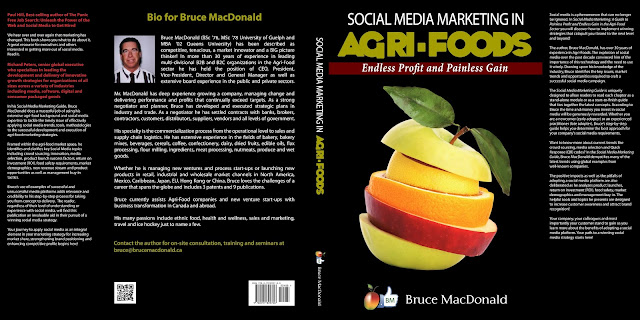FAO PREDICTS BALANCED FOOD MARKETS, LESS PRICE VOLATILITY
Posted in News, Financial Reports, Economics, Grains / Pasta / Tuber, Grains, Whole Grain, Grain Processing, Processing, Meat Products, Processed Meats, Chicken, Beef, Pork, Poultry, Dairy, Dairy Management, Sugar, Sucrose, Oilseeds, Fats/Oils, International, Seafood, Fish, Sweeteners, Market Research, Market Trends, Agriculture, Crop, Rice, Beverages, Cereal, Bakery / Cereal, Wheat
ROME—Food commodity markets are becoming more balanced and less price volatile than in recent years thanks to improved supplies and a recovery in global inventories of cereals, according to a new report by the United Nation's Food and Agriculture Organization (FAO).
FAO's "Food Outlook" report attributes the increase in 2013 cereal production to a recovery of maize crops in the United States and record wheat harvests in CIS countries. World rice production in 2013 is expected to grow only modestly.
"The prices for most basic food commodities have declined over the past few months. This relates to production increases and the expectation that in the current season, we will have more abundant supplies, more export availabilities and higher stocks," said David Hallam, director, trade and markets division, FAO.
Global cereal stocks, ending in 2014, are anticipated to increase by 13% to 564 million tons, with coarse grains alone up 30%. The increase is anticipated to occur mostly in the United States. Wheat and rice stocks are also projected to rise, by 7% and 3% respectively.
The world food import bill is set to decline 3% to $1.15 trillion in 2013, with import costs of cereals, sugar, vegetable oils and tropical beverages falling, but dairy, meat and fish remaining firm, according to the report.
The FAO Food Price Index, which measures monthly changes in international prices of five major food commodity groups, rose slightly in October, averaging 205.8 points. This was 2.7 points, or 1.3% above September, but still 11 points, or 5.3% below its October 2012 value. The slight increase was largely driven by a surge in sugar prices, although prices of the other commodity groups were also up.
Forecasts for other commodities include:
"The prices for most basic food commodities have declined over the past few months. This relates to production increases and the expectation that in the current season, we will have more abundant supplies, more export availabilities and higher stocks," said David Hallam, director, trade and markets division, FAO.
Global cereal stocks, ending in 2014, are anticipated to increase by 13% to 564 million tons, with coarse grains alone up 30%. The increase is anticipated to occur mostly in the United States. Wheat and rice stocks are also projected to rise, by 7% and 3% respectively.
The world food import bill is set to decline 3% to $1.15 trillion in 2013, with import costs of cereals, sugar, vegetable oils and tropical beverages falling, but dairy, meat and fish remaining firm, according to the report.
The FAO Food Price Index, which measures monthly changes in international prices of five major food commodity groups, rose slightly in October, averaging 205.8 points. This was 2.7 points, or 1.3% above September, but still 11 points, or 5.3% below its October 2012 value. The slight increase was largely driven by a surge in sugar prices, although prices of the other commodity groups were also up.
Forecasts for other commodities include:
- Cassava—world cassava output is expected to increase for the 5th consecutive year to reach 256 million tons in 2013, fueled by rising demand for food in the African continent and increasing industrial applications of cassava in East and Southeast Asia, especially for ethanol and starch.
- Sugar—world sugar production is forecast to increase only slightly in 2013-14, while sugar consumption is set to grow approximately 2%.
- Oilseeds—world oilcrop production could climb to an all-time high in 2013-14, supported by record soybean crops in South America. Global output of oilseed products is projected to match world utilization for the 2nd consecutive year, although a sizeable surplus is possible in the case of meals/cakes.
- Meat—world meat production is anticipated to grow 1.4% in 2013, with no sign of overall price decreases, despite reduced feed costs.
- Dairy—world milk production in 2013 is forecast to grow 1.9%. Asia, Latin America and the Caribbean are expected to account for most of the increase, with only limited growth elsewhere. International dairy products prices have declined, but still remain at historically high levels.
- Fisheries—aquaculture continues to boost overall fish supply, pushing quotations down from earlier levels. Fish consumption per capita keeps growing, with aquaculture in the process of overtaking capture fisheries as the main source of supply for direct human consumption.
Check out my new e-book entitled: "Social Media Marketing in Agri-Foods: Endless Profit and Painless Gain"
The book is available on Amazon and Kindle for $4.99 USD. Visit amazon/Kindle to order now:
http://www.amazon.ca/Social-Media-Marketing-Agri-Foods-ebook/dp/B00C42OB3E/ref=sr_1_1?s=digital-text&ie=UTF8&qid=1364756966&sr=1-1
Thanks for taking the time


No comments:
Post a Comment